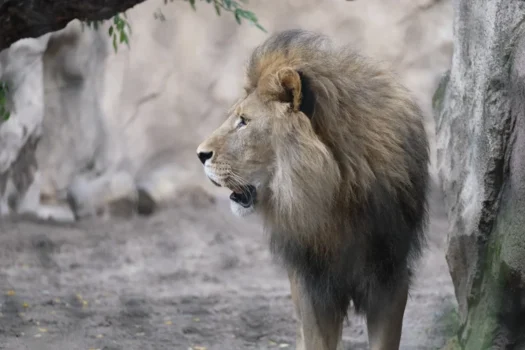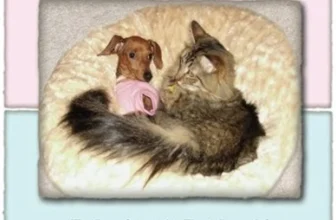It’s not every day that we ponder the survival of a specific species, but the California Spangled Cat is not your average feline. Classified as “endangered” by the International Union for Conservation of Nature, these cats require urgent attention and protection. With only a few hundred remaining, every effort to conserve the species is critical. In this article, we’ll explore the current status of California Spangled Cats, the conservation efforts that have been made so far, and the steps forward for their preservation. So, let’s dive into the world of these captivating cats.
The Status of California Spangled Cats Today
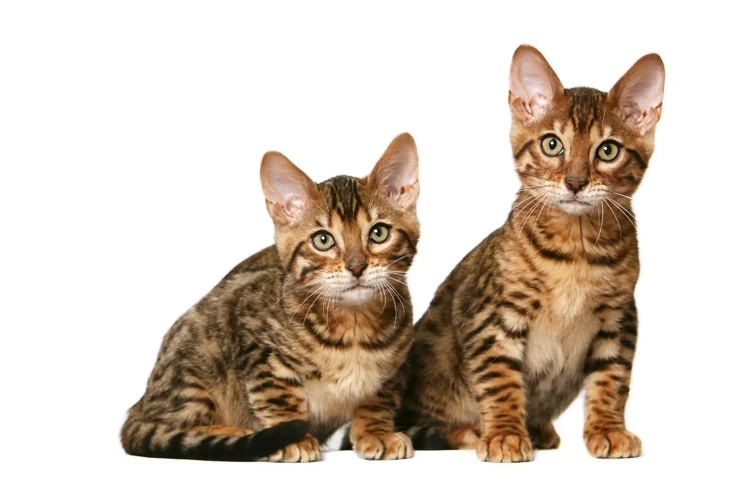
The California Spangled Cat, once widely popularized in the media during the early 1980s, has since slipped into obscurity. The current status of these felines, once a symbol of American design and innovation, is shrouded in mystery and uncertainty. Let us investigate the current state of the California Spangled Cat population, their main threats, and previous conservation efforts undertaken to protect these unique creatures and their habitat.
Population Size and Location
California Spangled Cats, once on the brink of extinction, can now be found in small populations across the United States. According to the International Union for Conservation of Nature (IUCN), the current population of California Spangled Cats is estimated at less than 200. Of these, most are in captivity, while a few are believed to be living in the wild.
In captivity, California Spangled Cats can be found in zoos and private animal sanctuaries. One notable example is Dharma, a California Spangled Cat that resides in the National Zoo in Washington D.C. California Spangled Cats were once known to inhabit areas of southern and central California, but have not been seen in the wild since the 1990s.
It’s important to note that despite the low population size of California Spangled Cats, there are dedicated individuals and organizations working towards conserving the species. Through extensive breeding programs, the population has been able to slowly recover.
Table:
California Spangled Cat Population Location
| Type | Population Size | Location |
|---|---|---|
| In Captivity | Less than 200 | Zoos and private animal sanctuaries |
| In the Wild | Unknown | Believed to be extinct in their native habitat of southern and central California |
However, despite the efforts, there is still much work to be done in order to increase their population size and prevent them from disappearing completely.
Main Threats
California Spangled Cats face various threats that have contributed to their dwindling population in the wild. These threats are mainly human-induced, either directly or indirectly. Below is a table that outlines some of the main threats to the California Spangled Cats:
| Threats | Details |
|---|---|
| Poaching and Illegal Hunting | California Spangled Cats are highly valued in the exotic pet trade which has led to poaching and illegal hunting. This practice has significantly reduced their population in the wild. |
| Loss of Habitat | The rapid development of urban and suburban areas in California has led to the loss of natural habitats. This has forced the cats to migrate, which exposes them to various dangers like traffic accidents and attacks from predators. |
| Climate Change | Global warming has led to unpredictable weather patterns and prolonged droughts in California. This has reduced the availability of prey for the cats, making it difficult for them to survive. |
| Diseases | California Spangled Cats are susceptible to various diseases that can be transmitted from domestic and feral cats. These diseases can cause significant harm to the cats and increase their mortality rate. |
These threats have impacted the California Spangled Cat population, and if more isn’t done to address them, the cats could face extinction. It’s crucial to raise awareness of these threats to ensure that the cats receive the necessary protection and conservation measures.
Conservation Efforts To Date
Conservation Efforts To Date: There have been various efforts to conserve the California Spangled Cat species over the years. One of the earliest that can be traced was by Paul Casey in the 1970s. He created the California Spangled Cat breed after being inspired by the disappearing cat species in California. Casey’s idea to create a breed in the image of the wild cats was to give them a better chance of survival. Another early conservation effort was by anthropologist Louis Leakey, who, in the 1980s, started a breeding project to preserve the species. However, these projects didn’t fully achieve their intended goal of preserving the species due to a lack of funding and support.
Other conservation efforts that have taken place over the years include raising awareness and educating people on the importance of the breed. Some organizations focused on raising these cats, putting them up for adoption, and promoting them as pets. This way, these cats could have a chance to thrive and would not have to remain in the wild where they faced many threats.
Several conservation organizations and professionals have also developed breeding programs to preserve the species. Though some experts disagree that breeding is the right approach for conservation, it has been seen as a way to maintain the population of the California Spangled Cat and introduce desirable genes to the wild population. One such program is the California Spangled Cat Breeders Association and its “breed standard” guidelines, which emphasize physical and personality traits designed to keep the breed in high demand.
To complement these breeding programs, some conservationists have worked to help find homes for these cats through a foster program. These programs allow individuals to care for these cats by providing temporary homes, food, and medical care. This helps to take the burden of caring for these cats off the original keepers while also giving the cats a loving home.
There has been a mixed effort to conserve the California Spangled Cat in the past. It is important to remember that without the early attempts of breeders, volunteers, and conservationists, the California spangled cat might have gone extinct.
The Future of Conservation Efforts
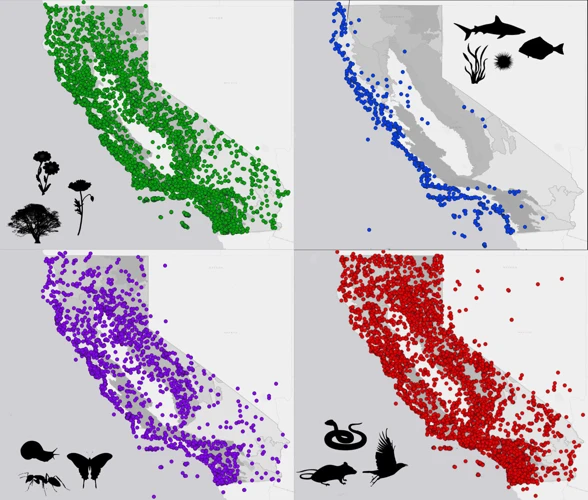
As the California spangled cat population continues to face threats such as habitat loss and human-wildlife conflict, the need for conservation efforts is crucial. The question remains, what does the future hold for safeguarding this unique feline species? With current science and technologies, new research and innovations, and collaboration and partnerships emerging, there is hope for the California spangled cat. In this article, we explore the future of conservation efforts for this beloved feline species.
Current Science and Technologies
In the current era, the world is advancing at an unprecedented rate in terms of technology and science. Conservation efforts have also taken advantage of this upswing in technological advancements. Scientists and researchers are now using DNA analysis to investigate the lineage of California Spangled Cats, which can help create a more effective breeding plan to increase the genetic diversity of the California Spangled Cat population.
Artificial insemination is another scientific advancement that has been adopted to help in breeding California Spangled Cats in captivity. By using this process, it is possible to breed cats that may not have mated naturally. This has been effective when dealing with low population sizes and increasing the genetic diversity of the species.
Conservationists are utilizing GPS collars to track the movements of California Spangled Cats in the wild. By doing this, they can monitor the health status of the cats and examine their movements and patterns to understand their habitat needs. This data can then be used to formulate a more effective conservation plan, including protected areas for the species.
Scientists have also been working to create a more effective vaccine for common feline diseases. Vaccinations can be challenging to administer to cats in the wild, but a more effective vaccine could help improve health and survival rates among the California Spangled Cat population. Additionally, researchers are working on developing new and innovative medical treatments to treat injured or sick cats that come under the care of conservation organizations.
| Current Science and Technology Advancements: |
|---|
| DNA analysis to investigate lineage |
| Artificial insemination for breeding |
| GPS collars for tracking |
| Improved vaccines for diseases |
| Innovative medical treatments |
These scientific advancements offer hope for the future of California Spangled Cats, and conservationists are optimistic about the potential for positive change. It is important to continue to support research and development in this field to ensure the continued survival and conservation of this incredible species.
New Research and Innovations
New Research and Innovations
In recent years, there have been several exciting developments in the area of California Spangled Cat conservation that offer hope for the future of this endangered species. Here are some of the most promising new research and innovations:
- Genetic studies: Through genetic studies of California Spangled Cat populations, scientists have been able to identify genetic markers that can help breeders maintain a diverse gene pool. This can help prevent inbreeding in captive populations and promote better health and genetic diversity in the wild.
- Habitat restoration: By restoring damaged habitats, conservation efforts can help create new homes for the California Spangled Cat. This includes planting native vegetation, removing invasive species, and working to protect important wildlife corridors.
- Reintroduction programs: Reintroduction programs, which involve reintroducing captive-bred cats into the wild, have shown promise in other endangered cat species. By carefully selecting release sites and monitoring the released individuals, scientists can help boost the wild population of California Spangled Cats.
- Artificial insemination: Artificial insemination allows breeders to preserve genetic diversity in small or isolated populations. This technique can help promote genetic diversity and prevent inbreeding, which can reduce the likelihood of genetic disorders and promote overall health in the population.
These new research and innovations offer hope for the future of the California Spangled Cat. By implementing these methods in conjunction with existing conservation efforts, we can help ensure the survival of this magnificent species for generations to come.
Collaboration and Partnerships
The task of conserving the California Spangled cat is an immense one that requires the involvement of many stakeholders. Collaboration and partnerships play a crucial role in achieving the lofty goals of preserving this iconic feline species. By working together, the various groups can pool their resources, knowledge, and expertise to create effective conservation strategies that can benefit California Spangled cats in the wild and even in captivity.
International Union for Conservation of Nature (IUCN) is a key partner in the conservation of endangered species, including the California Spangled cat. The IUCN brings together governments, non-governmental organizations, scientists, and other stakeholders to develop and implement conservation policies that promote biodiversity and the sustainability of natural resources. In collaboration with other organizations, the IUCN seeks to reduce threats to the California Spangled cat population in the wild and increase its numbers through captive breeding and reintroduction programs.
Another critical partner in California Spangled cat conservation is the Wildlife Conservation Society (WCS). Based in New York but with a global presence, WCS works with other organizations, scientists, and local communities to conserve wildlife and wild places. WCS’s focus is on building conservation capacity and ensuring that people and wildlife can coexist sustainably. In collaboration with the IUCN, WCS is working on a comprehensive conservation strategy for the California Spangled cat, which includes research, habitat restoration, community outreach, and policy advocacy.
In addition to these global organizations, local conservation groups and individuals are also playing an important role in conservation efforts. For example, the California Spangled Cat Society (CSCS) is a non-profit organization dedicated to promoting awareness, education, and the adoption of California Spangled cats. The CSCS works with local shelters, rescue groups, and breeders to save and protect California Spangled cats that might otherwise be at risk. By fostering collaborations with these local organizations, the CSCS is helping to increase the reach and effectiveness of its conservation efforts.
Zoos and aquariums can also play a vital role in the conservation of endangered species such as the California Spangled cat. By participating in captive breeding programs, zoos and aquariums can help to maintain healthy and genetically diverse populations of this species for future reintroduction into the wild. The San Diego Zoo, for example, has been involved in the captive breeding and release of California Spangled cats for several years as part of its broader conservation program.
Collaboration and partnerships are essential for the preservation of the California Spangled cat. By working together, government agencies, non-governmental organizations, scientists, local communities, and individuals can combine their efforts and expertise to develop effective conservation strategies and ensure that this iconic feline species will thrive for generations to come.
Community Involvement and Support
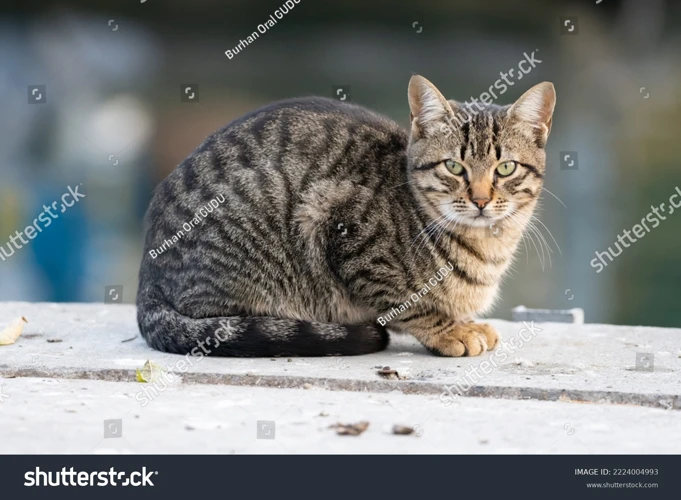
As we look towards the future of California Spangled cat conservation, it’s clear that community involvement and support will play a vital role. Engaging with the local community, providing education and raising awareness about the plight of these beautiful cats is key to ensuring their survival. Through the collective efforts of individuals and groups alike, we have the power to make a difference in the lives of these majestic animals. Let’s explore some of the ways in which we can get involved and support the conservation efforts.
Volunteer Opportunities and Programs
Those who are passionate about the conservation of California Spangled Cats have numerous volunteer opportunities and programs to choose from. The options can range from hands-on work with the cats to non-profit administrative positions. Here are a few ways you can get involved in these efforts:
- Rescue and Rehabilitation Centers: Local rescue centers offer opportunities to help care for these cats. Volunteers can help with feeding, cleaning, and socializing the cats, which can make a significant impact on their health and well-being.
- Advocacy organizations: Several organizations are entirely dedicated to conservation efforts and raising public awareness about the declining populations of these cats. Volunteers can participate in educational programs, fundraising drives, and many other outreach initiatives to drive conservation efforts.
- Educational Programs: Museums, educational institutions, and other venues offer a range of educational programs related to California spangled cats and their conservation, ranging from hour-long lectures to multi-day symposiums. Volunteering to help host such events is an excellent way to learn, network and contribute.
- Creative efforts: Aspiring writers, artists, and filmmakers can use their talents to promote efforts to save California Spangled Cats. Volunteers who want to put their creative abilities to work can contribute to fundraising or advertising campaigns or craft content that educates and raises awareness of conservation challenges and opportunities.
Through these diverse volunteer opportunities and programs, individuals can experience the immense satisfaction of making a difference in protecting one of the world’s most unique feline species. If you are interested in learning more about the ins and outs of fostering California Spangled Cats, check out our article on Cali-Spangled Cat Fostering Tips.
Education and Awareness Campaigns
Education and awareness campaigns are essential for the success of California Spangled cat conservation efforts. These campaigns aim to educate people about the need to protect the species and the steps they can take to make a positive impact.
One example of an effective campaign is the “Save the Spangle” initiative launched by the California Spangled Cat Association. The campaign includes a website with information about the species and how to get involved in conservation efforts. The website also offers resources for educators, including lesson plans and activities that can be used in classrooms to teach children about the importance of protecting endangered species.
Other organizations have launched similar campaigns, including the World Wildlife Fund and the Wildlife Conservation Society. These campaigns use a variety of tactics to raise awareness, including social media, celebrity endorsements, and public events.
Table: Examples of Education and Awareness Campaigns
| Campaign Name | Organization | Purpose |
| — | — | — |
| Save the Spangle | California Spangled Cat Association | Educate people about the California Spangled Cat and how to get involved in conservation efforts |
| Stop Extinction | World Wildlife Fund | Raise awareness about endangered species and the need to protect them |
| 96 Elephants | Wildlife Conservation Society | Raise awareness about the crisis facing elephants due to ivory poaching |
In addition to these campaigns, many zoos and wildlife parks are also involved in education and awareness efforts. These institutions offer exhibits and educational programs that allow visitors to learn about endangered species and the steps they can take to protect them.
Education and awareness campaigns play a critical role in California Spangled cat conservation efforts. By educating people about this endangered species and the threats they face, we can work together to ensure that these magnificent creatures are protected for generations to come.
Challenges and Opportunities
As with any conservation effort, there are challenges and opportunities to consider when it comes to the California Spangled Cat. These obstacles may involve funding and political support, but there is also potential for groundbreaking advancements in science and technology. While the journey toward saving this unique feline species may be complex, it is an endeavor that offers tremendous potential for both the cats themselves and the wider world around them. Let’s explore some of the challenges and opportunities that lay ahead.
Political and Funding Obstacles
Despite the progress made in California Spangled Cat conservation efforts thus far, there are still several political and funding obstacles that remain a challenge for those working to preserve this endangered species.
Firstly, there is a lack of political will and support for the conservation of California Spangled Cats. Many policymakers are often preoccupied with other issues that they deem more urgent and pressing, which often results in funding cuts and reduced attention to conservation efforts. Such an attitude shows that California Spangled Cat conservation is not seen as a priority compared to other issues, which can hamper the progress of conservation efforts.
Secondly, inadequate funding poses a significant challenge to California Spangled Cat conservation initiatives. Funding is limited and requires extensive networking and lobbying to raise substantial amounts of money for the cause. While many financial resources are directed towards more prominent and charismatic species such as elephants and tigers, lesser-known animals like the California Spangled Cat are sometimes overlooked. This lack of funding makes it difficult to fund conservation research, maintain suitable habitats, and facilitate effective conservation measures.
The last political and funding obstacle is the lack of coordination between governmental and non-governmental organizations in conservation projects. Both sectors often duplicate efforts, leading to competing demands for limited funds. Additionally, conflict and competing interests may arise between these organizations, which can impede conservation progress.
Addressing these political and funding obstacles is crucial for the long-term success of California Spangled Cat conservation efforts. Policymakers must create an enabling environment that promotes conservation initiatives, while funding should be allocated where it is most urgently needed. Efforts should also be made to increase collaboration, cooperation, and partnerships between various conservation stakeholders.
New Frontiers and Possibilities
As conservation efforts for California Spangled Cats continue to evolve, new frontiers and possibilities are emerging that hold great promise. Some of the most exciting developments include:
1. Genetic Engineering: With recent breakthroughs in genetic engineering technology, it may be possible to selectively breed California Spangled Cats with greater resilience to common health issues. This could help to boost population numbers and protect the species from extinction.
2. Artificial Intelligence: Thanks to advancements in AI, researchers are now able to analyze vast amounts of data on California Spangled Cats more quickly and accurately than ever before. This may help to identify new threats to the species and devise more effective conservation strategies.
3. Habitat Restoration: By restoring and protecting the natural habitats of California Spangled Cats, conservationists can help to ensure the long-term survival of the species. Potential strategies may include reforestation, wetland restoration, and the removal of invasive species.
4. Public Engagement: By engaging the public in conservation efforts, researchers can help to raise awareness about the plight of California Spangled Cats and encourage more people to get involved in conservation efforts. This may include social media campaigns, public events, and educational outreach programs.
As with any conservation effort, there are sure to be challenges and setbacks along the way. However, these new frontiers and possibilities offer great hope for the future of California Spangled Cats and the broader ecosystem in which they inhabit. By continuing to innovate and collaborate, we can work towards a future where these beautiful creatures thrive and flourish.
Conclusion
After a thorough analysis of the current state of California Spangled Cats and the efforts being made to protect them, it is clear that there is much work to be done to ensure their survival in the future. The California Spangled Cat population has been greatly reduced due to various threats, including habitat destruction, climate change, and poaching.
Despite these challenges, there have been efforts made to conserve and protect the remaining population of California Spangled Cats. Conservation efforts to date include habitat restoration, captive breeding programs, and public education and awareness campaigns. However, there is still much more work to be done to ensure the continued survival of this amazing species.
Looking forward, there are promising new technologies and innovations emerging that could greatly assist in the conservation efforts for California Spangled Cats. These include advances in genetic analysis and monitoring, as well as new approaches to habitat management and restoration.
Additionally, collaboration and partnerships between various organizations and government agencies will be crucial in the future. Funding and political support will also be necessary to ensure that conservation efforts for California Spangled Cats can be successful.
Community involvement and support will also be vital. By raising awareness and educating the public about the plight of these cats, we can work to change public perception and encourage action to protect them.
In conclusion, the future of California Spangled Cat conservation efforts is both challenging and full of potential. With continued dedication, collaboration, and support, we can work to protect and preserve this amazing species for future generations to enjoy. Let us all strive to do our part in this important endeavor.
Frequently Asked Questions
What makes California spangled cats unique?
California spangled cats are unique due to their wild appearance, which resembles that of a leopard or cheetah. They were intentionally bred to resemble wild cats and have a distinctive pattern that sets them apart from other domestic breeds.
Are California spangled cats endangered?
Yes, California spangled cats are critically endangered and few in number. The breed’s population has been declining for several years, placing them at risk of extinction.
What are the current conservation efforts for California spangled cats?
Currently, scientists and animal conservationists are working to rebuild the California spangled cat population through a variety of conservation efforts and initiatives across the United States.
What are the main threats facing California spangled cats?
The main threats to the California spangled cats include loss of habitat, illegal poaching, and inbreeding that has resulted in health problems.
What new technologies are being developed to aid California spangled cat conservation efforts?
Scientists are exploring genetic technologies, such as cloning and genetic engineering, to help rebuild the California spangled cat population. Microchipping and GPS tracking are also being utilized to track and study the cats’ behavior and movement patterns.
What role can the community play in California spangled cat conservation efforts?
The community can play a vital role in conserving the California spangled cat by supporting conservation initiatives and adopting a responsible behavior toward animals in general.
What education and awareness initiatives are being undertaken to support California spangled cat conservation?
Various educational and awareness campaigns are being undertaken to inform the public about the plight of California spangled cats, their significance and how to help safeguard them.
What political and funding obstacles are currently facing California spangled cat conservation efforts?
There are various challenges facing the California spangled cat conservation efforts, including lack of political will and funding; these pose a significant threat to animal conservation efforts.
What benefits do California spangled cats offer to society?
California spangled cats are beautiful, unique, and serve as an essential part of the ecosystem and the food chain. Additionally, they contribute to sustaining the biodiversity and natural balance.
Can people adopt California spangled cats as pets?
Currently, the few remaining California spangled cats in existence are primarily being used for breeding and research purposes, so they are not widely available as pets. However, people can adopt other domestic breeds that share similar characteristics.

